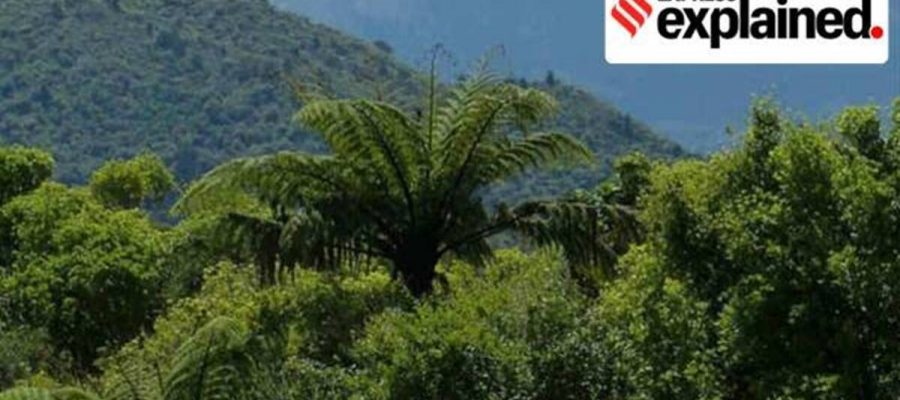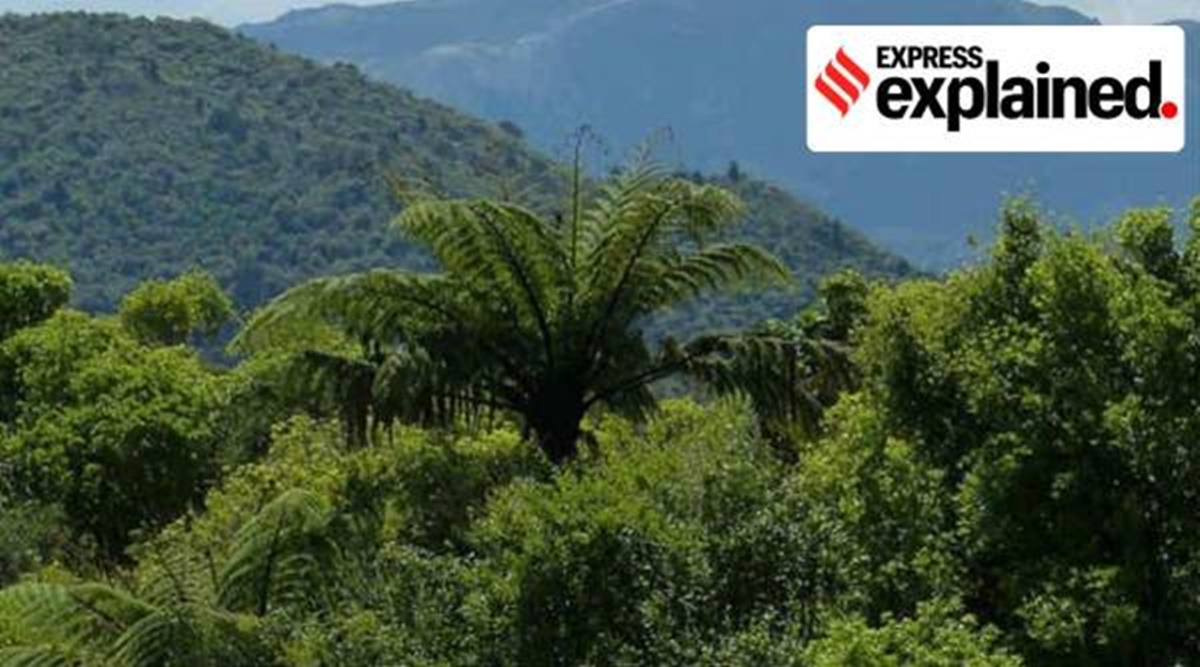What is the “Pran Vayu Devta Pension Scheme”, and Oxy Van (Oxygen Forests) that Chief minister Manohar Lal Khattar announced on the occasion of World Environment Day
Amid the ongoing pandemic, several states including Haryana witnessed a crisis of medical oxygen that was needed for severely ill Covid-19 patients. To avoid such a deficit in the future, the Haryana government has come out with what it says is a “unique and first of its kind initiative”.
What is the “Pran Vayu Devta Pension Scheme”, and Oxy Van (Oxygen Forests) that Chief minister Manohar Lal Khattar announced on the occasion of World Environment Day?
What is the Pran Vayu Devta Pension Scheme (PVDPS)?
Chief Minister Khattar said on Saturday: “The state government has taken an initiative to honour all those trees which are of the age of 75 years and above and have served humanity throughout their life by producing oxygen, reducing pollution, providing shade and so on. Such trees will be identified throughout the state and these will be looked after by involving local people in this scheme”.
He added, “We get pure air from the environment which benefits the entire humanity. For this, Oxy Forests will be planted on land ranging from 5 acres to 100 acres in the cities of Haryana.”
For maintenance of trees older than 75 years, a “pension amount” of Rs 2,500 would be given per year in the name of PVDPS. This ‘tree pension’ shall continue to increase every year, on lines similar to the Old Age Samman Pension Scheme in the state.
Officials in the CMO told The Indian Express: “The pension shall be given by the Urban Local Bodies department for the upkeep of the trees, installing plates, grilles etc.”
How many such 75-year-old trees are there in the state?
According to state government officials, at least 2,500 such trees have been identified so far. The Forest Department had commissioned a survey to identify these old trees. Village panchayats will now be paid Rs 2,500 as ‘pension’ per tree for their upkeep.
What is an Oxy Van (Oxygen Forest)?
What the state government is calling an Oxy Van are identified pieces of land, on which as many as 3 crore trees would be planted. The Oxy Vans will occupy 10 per cent of the 8 lakh hectares of land across Haryana.
“Oxy Van, Panchkula, will be established in Bir Ghaggar over an area of 100 acres to create Mother Nature’s green lungs so that residents of Panchkula can breathe in fresh oxygen. Total cost of project shall be Rs 1 crore,” the government said.
Oxy Van, Karnal, shall come up along the Old Badshahi Canal (also known as Mughal Canal), on an area of 80 acres, covering a total length of 4.2 km. This park will have components named: Chit Van (Forest of Beauty), Paakhi Van (Forest of Birds), Antriksh Van (Forest of Zodiac Signs), Tapo Van (Forest of Meditation), Arogya Van (Healing/herbal Forest), Neer Van (Forest of Waterfalls), Rishi Van (Sapt Rishi), Panchvati (Five Trees), Smaran Van (Forest of Memories), and Sugandh Suvaas/Sugandh Van (Forest of Fragrance).
“The park will also have an information centre and a souvenir shop, and people will be able to buy plants at subsidized rates related to their Rashi (zodiac sign) to grow in their homesteads. An amphitheatre will be constructed where artists can perform for the entertainment of the public. Light and sound show will be shown to the visitors covering various aspects of this Oxy Van,” the government said.
The total cost of this project in Karnal shall be Rs 5 crore, and it will be a joint venture of Haryana Forest Department, the Government of India, and the Municipal Committee, Karnal.
What kind of trees will the Oxy Vans have, and how have they been identified?
According to the government:
* Chit Van will contain ornamental and flowering plants like the Orchid Tree (Kachnar), Indian Laburnum (Amaltas), Pride of India, Red silk cotton tree (Semal), Indian Coral, Sita Ashok, Java Cassia, Red Gulmohar, Golden Shower, Passion Flower, etc.
* Pakhi Van will house plants like Peepal, Banyan, Pilkhan, Neem etc.
* Antriksh Van will have “luck-boosting” plants like Flame of the Forest (Palash/Dhak), Jackfruit, Cluster Fig (Gullar), Amla, Krishan Neel, Champa, Khair, Bilwa, etc.
* Arogya Van will have medicinal plants like Tulsi, Ashwagandha, Neem, Aloe Vera, Chebulic Myrobalan (Harad), Baheda, and Amla, etc.
* Sugandh Vatika will contain fragrant plants like Sugadhraj, Chameli, Night Queen, Day King, Night-blooming Jasmine (Parijaat), Champa, Rose, Honeysuckle, Passiflora etc. According to the government, the sweet fragrance of these plants will allow those who cannot see, to also enjoy the surroundings.
* Panchvati has cultural, mythological, and environmental significance. Panchvati literally means five trees. These trees are Banyan/Barh/Bargad, Sacred Fig/Peepal, Stone Apple (Bilwa/Bil), Aonla, and Sita Ashok. Besides mythological significance, these trees provide a lot of ecological and environmental benefits.
* Barh and Peepal are known as “umbrella trees” which provide food and shelter to a variety of life forms including birds and insects, and offer the best shade as well. They fight sound pollution due to their thick foliage, and are known for producing more oxygen than any other tree.
* Bilwa is associated with Lord Shiva, and its leaves and flowers are offered to Him. It is also a good shady tree. Besides being a good food plant, its ripe pulp has medicinal value. It has liver-cleansing properties and removes even old plaque from the intestine, according to the government.
* Ashok or the Sorrowless Tree is associated with Sita, as it is said she spent time in Ashok Vatika in Lanka when she was abducted by Ravana. Its bark is used in urinary diseases. It is ornamental and provides shade as well. When in bloom in spring, it looks very attractive.
* As per Indian Vastu, these trees in Panchvati are to be planted in different directions. As mentioned in the Shastras, Peepal is to be planted in the East, Barh in the West, Bilwa in the North, Aonla in the South, and Ashok in Agney (south-west) direction. Panchvati Vatikas will be established in 134 Kurukshetra Tirthas (pilgrimages) located in Kurukshetra, Kaithal, Karnal and Panipat districts.
Why this idea of Oxy Vans?
The government says, “As a result of vehicular and industrial pollution in urban areas resulting in ‘Heat Island Effect’” and bad air quality; the cities, and towns urgently need Mother Earth’s green lungs to reduce the heat effect and improve the air quality.”
The Chief Minister said that oxygen shortage was one of the biggest problems which everyone faced during the pandemic. Since there is no substitute for “Prana Vayu”, this forest has been named Oxy Forest.”
Source: Read Full Article


